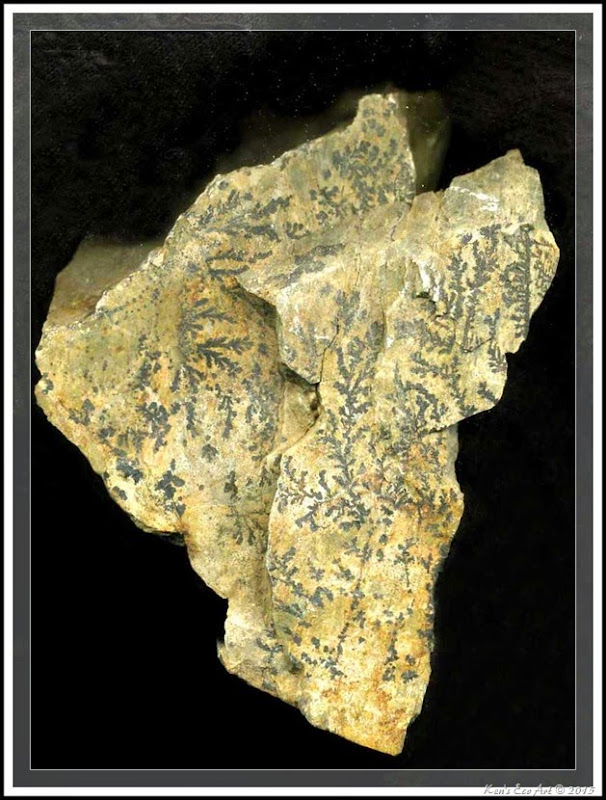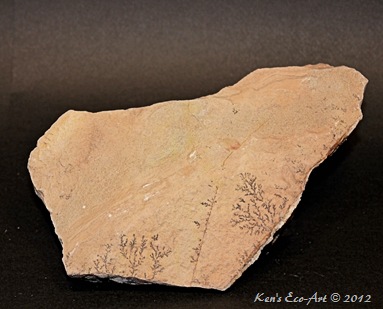|
| The term "dendrite" comes from the Greek word dendron, which means "tree". The most common example of this is when manganese oxides crystallize with a characteristic treelike or dendritic pattern along a rock fracture. They form when water rich in manganese and iron flows along fractures and bedding planes between layers of limestone and other rock types, depositing dendritic crystals as the solution flows through. A variety of manganese oxides and hydroxides can often be involved. The formation of frost dendrites on a window is another common example of this crystal growth. Concretions, are sometimes thought to be fossils, and occasionally one contains a fossil, but are generally not fossils themselves. Click here to learn more about concretions ... Concretions. (Information was taken from Wikipedia, the free encyclopedia) |



